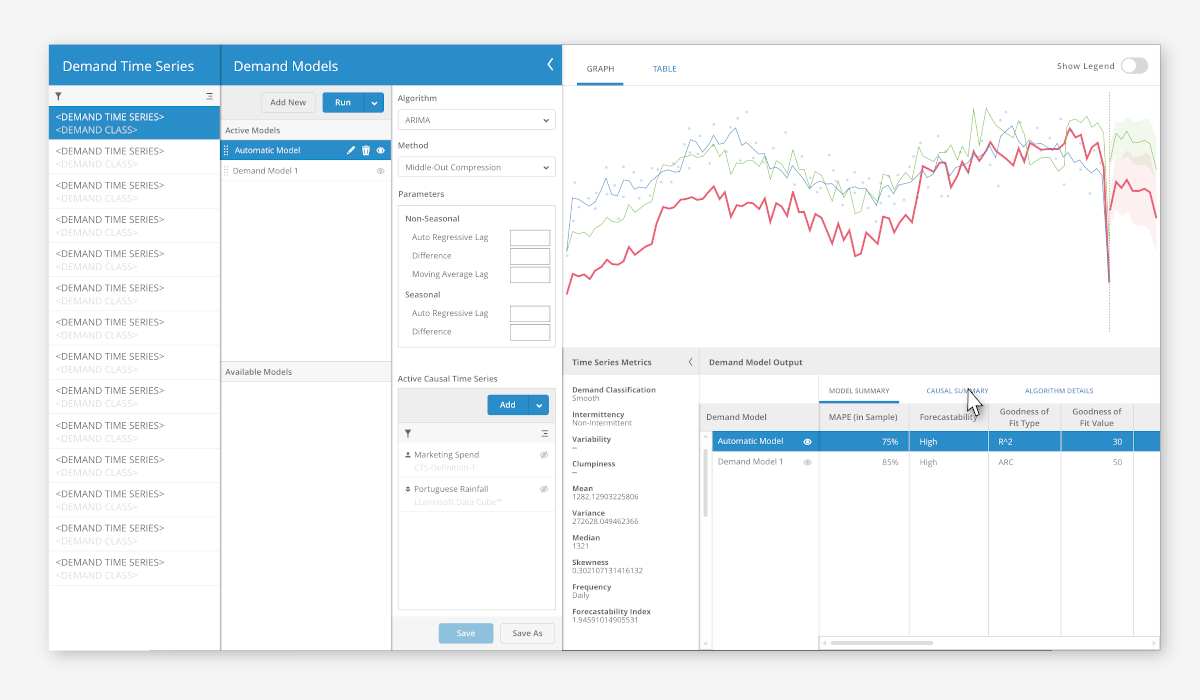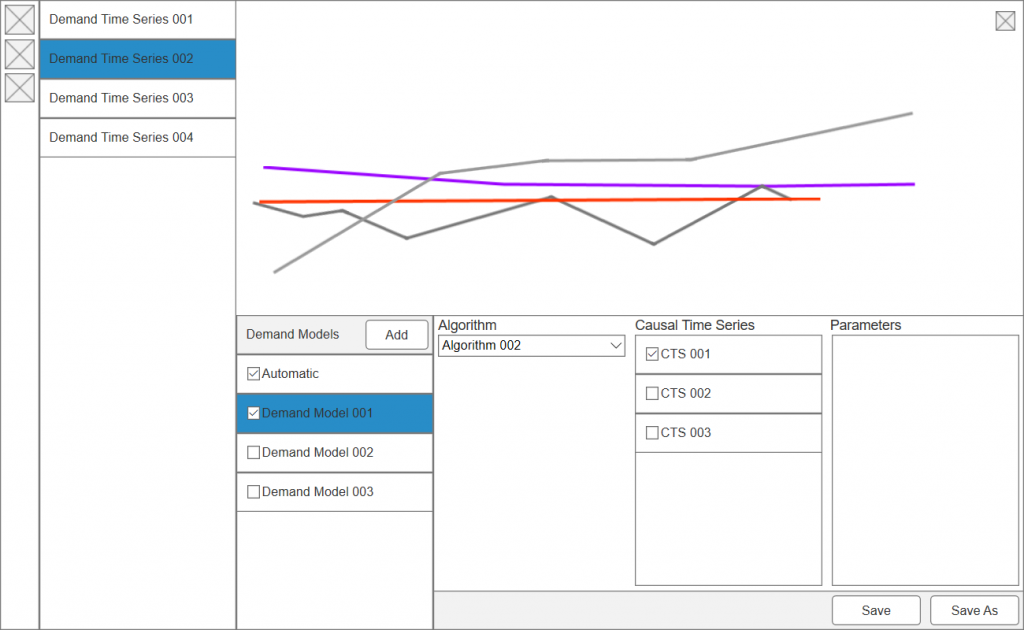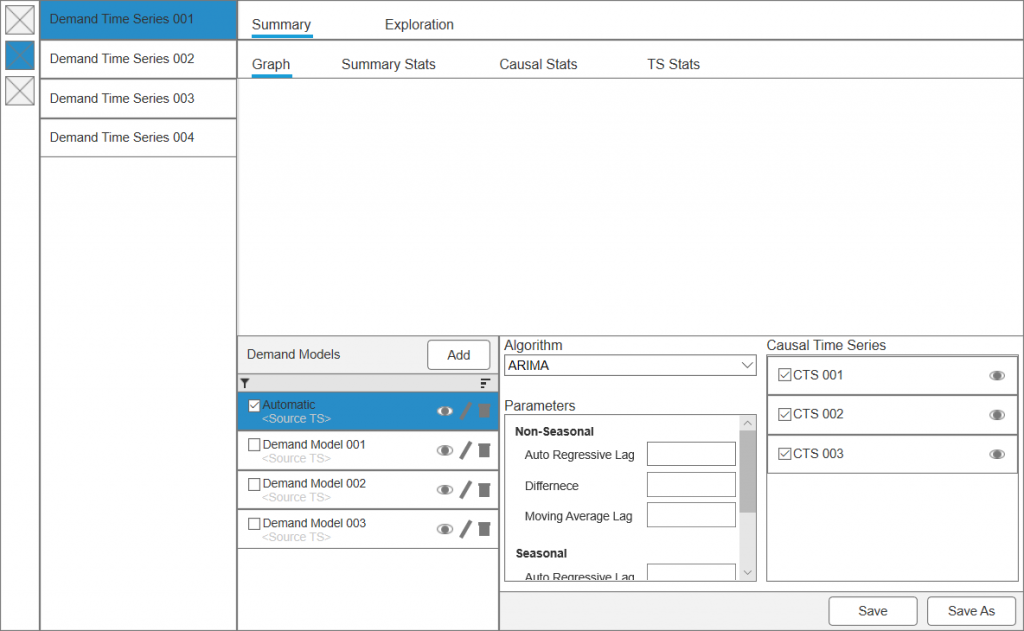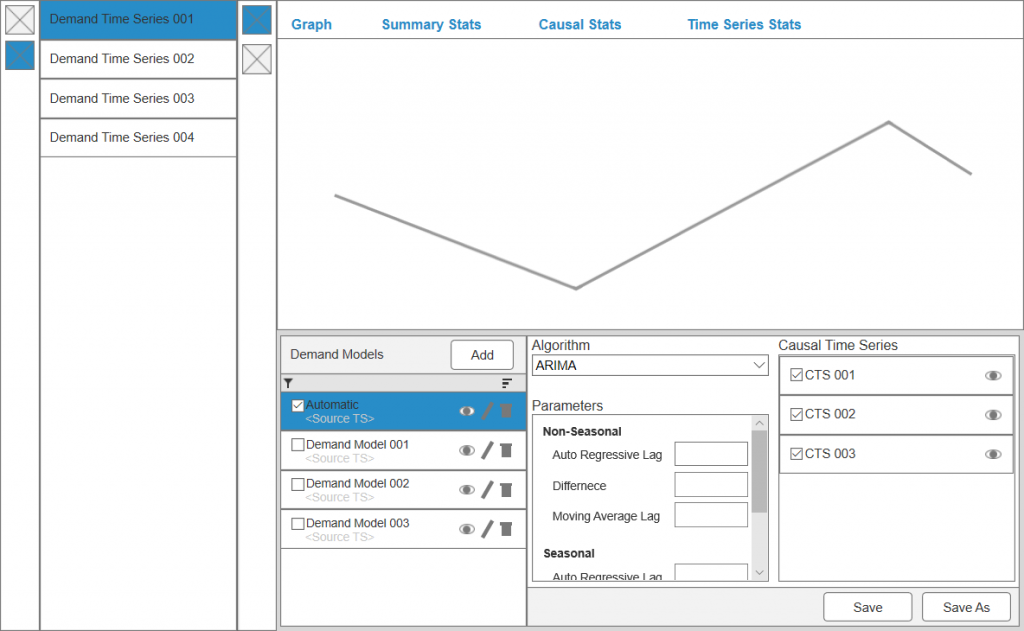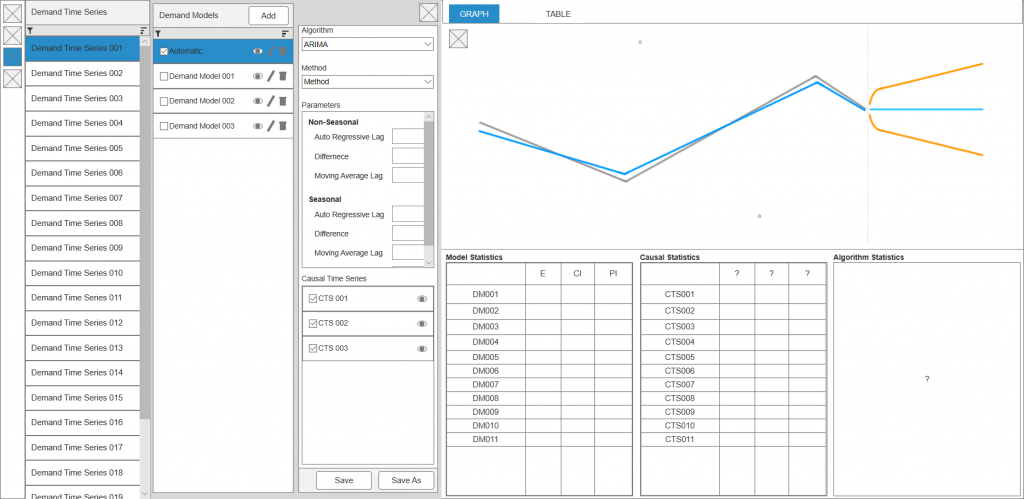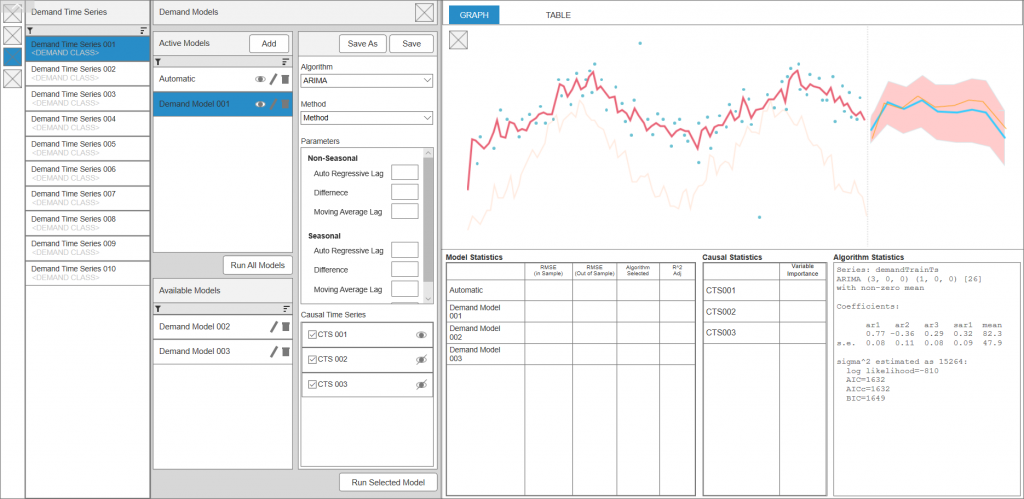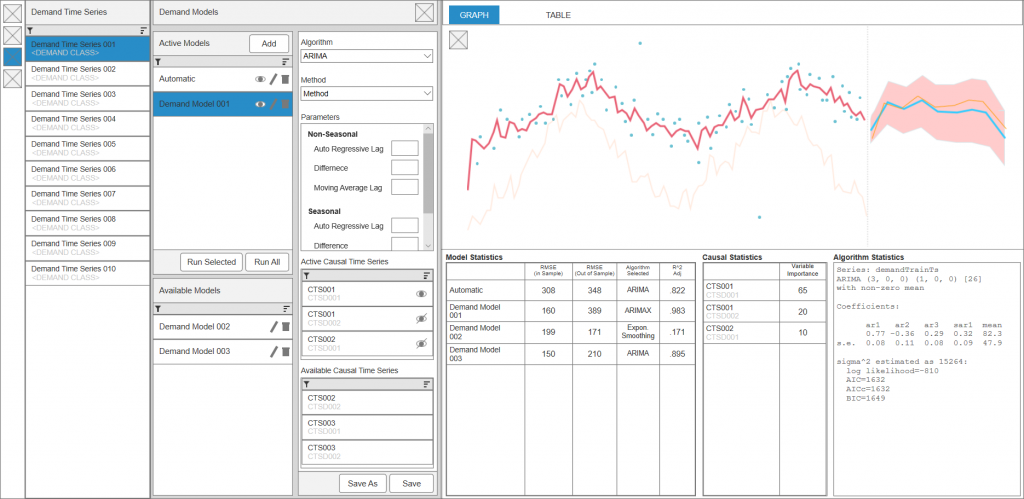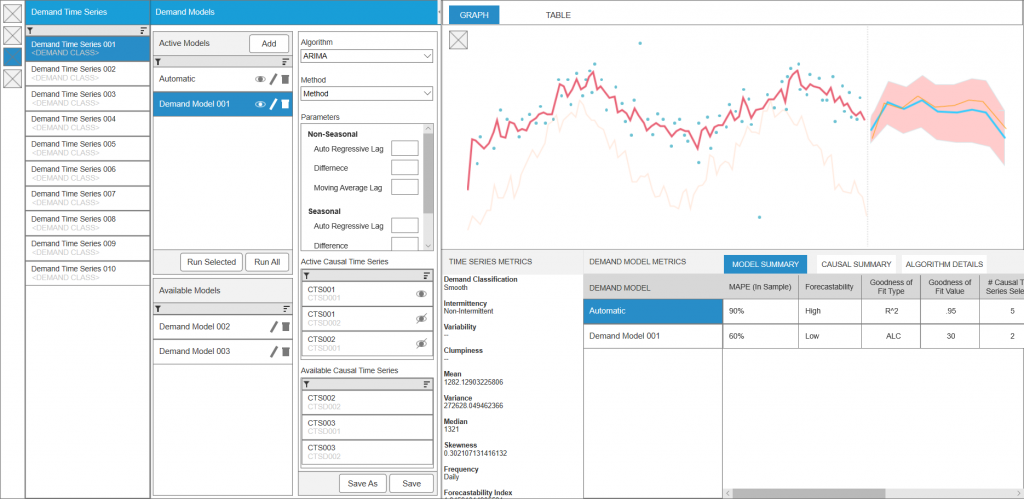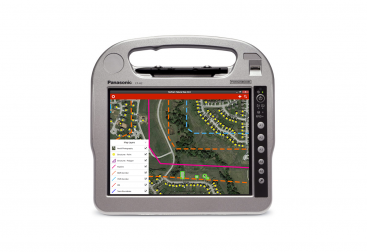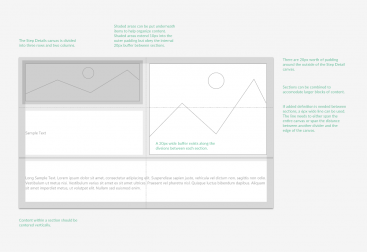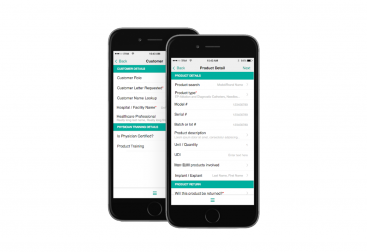2017-2019
Demand Guru (DmG), is a product that takes causative demand modeling out of the realm of academic papers and brings it to business users, allowing the user to get better forecasts and discover what market factors influence their business. I was the sole UX designer for the entirety of the project, working closely with Product Management, Data Scientists from the Applied Research team, and the engineers on our development team. This project was a rush to get a clever bit of math out of the lab and into the marketplace as quickly as possible. Sacrifices and compromises were made along the way but, by gum, it worked. In the words of Han Solo, “She may not look like much, but she’s got it where it counts…”
The terminology around demand modeling and forecasting can be tricky, but here is the general gist of how the product works:
- Transaction data (orders, shipments, etc.) is assembled, cleansed, and turned into a set of time series.
- Causal data is gathered from both internal (marketing spend, promotion schedules) and external (GDP, CPI, weather) sources.
- Demand models are built by combining causal data, algorithms (either statistical or machine learning), and the associated parameters.
- Demand models are then assigned to time series and run to generate a forecast.
The hardest thing to wrap my head around when designing the application was that the relationships between the three component parts of the model (demand data, causal data, and the demand model). The relationships aren’t linear, they’re three dimensional. And, as I would discover time and again, they’re very tricky to represent in software.
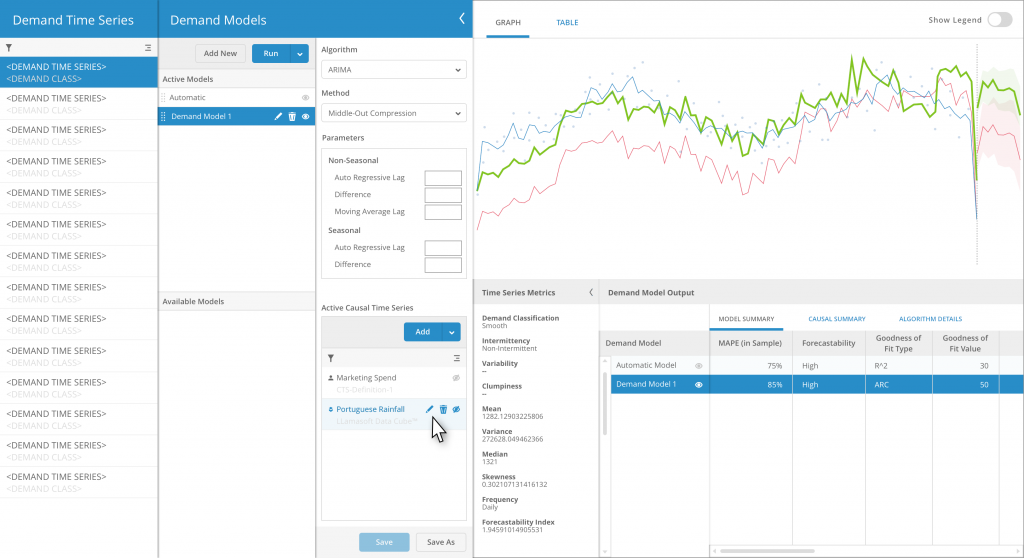
As a way to streamline the development process, Demand Guru itself would live within LLamasoft’s existing visual ETL solution Data Guru. On the plus side, this meant we didn’t have to re-create all of the data connection infrastructure. On the down side, this meant that we were constrained in what we could do stylistically with the interface. While, as seen above, I tried to integrate the new style we had developed on Supply Chain Guru X, some of it was lost in the implementation, as seen below.
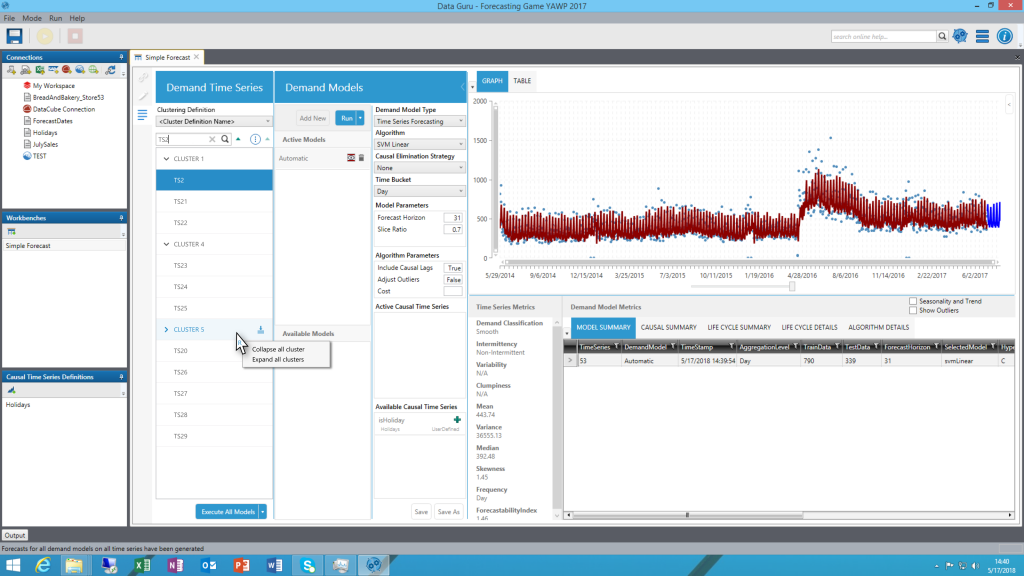
Due to the aggressive, compressed time line we were working towards and the limited bandwidth, I was not able to do user testing on this product before it shipped. However, as soon as we got it in the hands of actual users, we started getting feedback and discovered that the software was usable for a slew of use cases we hadn’t anticipated. The improvements, enhancements, and plans for version two of the software began almost immediately after launch.

